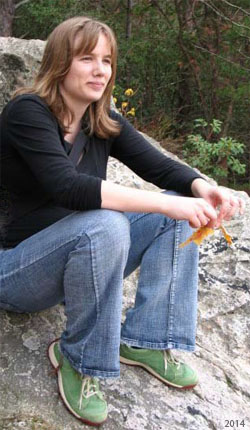

 |
 |
|
 Gueidan, Cecile ( - )
Gueidan, Cecile ( - )Dr Cecile Gueidan commenced at the Australian National Herbarium (CANB/CBG) in 2013.
Born in the Alsace region of France, Cecile graduated with a Master in Biology from the Universite Louis Pasteur in Strasbourg in 1998. She went on to obtain a DEA (~honours) in Systematics at the Museum National d'Histoire Naturelle in Paris in 1999 before taking up postgraduate studies at Duke University in the United States under the supervision of Francois Lutzoni, an expert in the evolution of symbioses. She obtained her Ph.D. in Systematic Biology in 2007. Subsequently, she has worked as a postdoc at the CBS-KNAW Fungal Biodiversity Centre in Utrecht and as a researcher at the Natural History Museum in London.
Cecile's research has focused on lichens, especially in the family Verrucariaceae, and on rock-inhabiting fungi, but also included work on fungal opportunistic pathogens. It is methodologically diverse, ranging from species discovery and alpha-taxonomy to higher level systematics and dated molecular phylogenies elucidating the evolution of lifestyles in different groups of fungi. She has published numerous peer-reviewed scientific articles and was awarded the Elias Magnus Fries medal of the International Mycological Association as an outstanding European early career mycologist.
In Australia, Cecile is looking forward to working with the significant collections of native lichens at CANB/CBG, which are housed in the cryptogam section of the herbarium on the grounds of the Australian National Botanic Garden. She is also interested in the biology and reproduction of lichens from biological soil crusts, a microbial- and cryptogam-dominated ecosystem which plays a major role in protecting soils against erosion in arid areas such as the Australian interior.
Source: Extracted from: article by Alexander N. Schmidt-Lebuhn in Australasian Systematic Botany Society Newsletter 158 (March 2014) p.18
Photo: Extracted from: Australasian Systematic Botany Society Newsletter 158 (March 2014) p.18